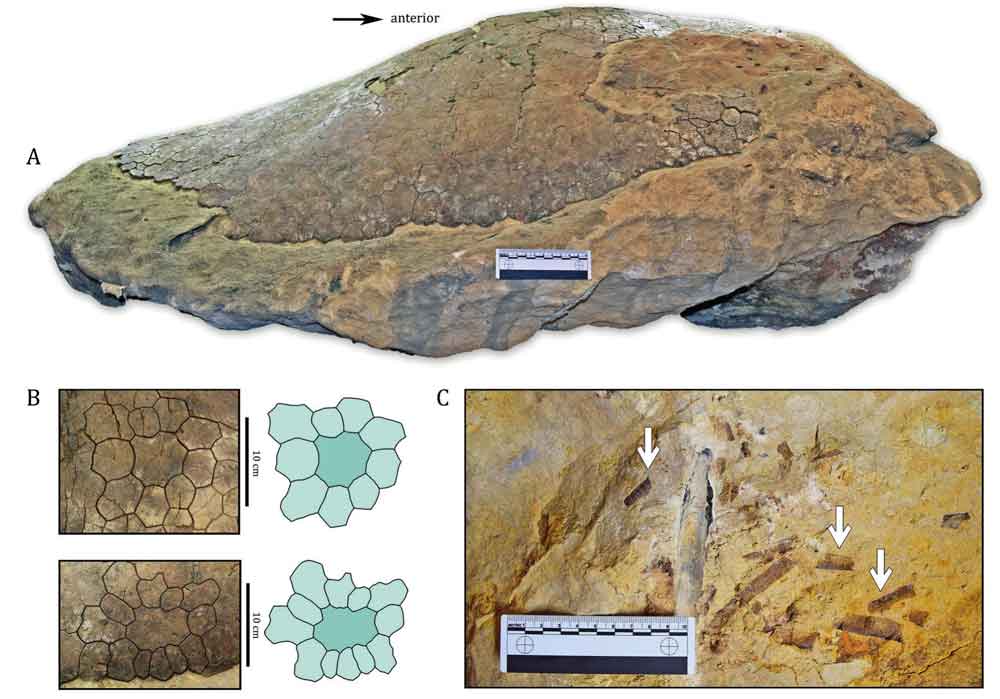A new species of Leatherback Sea Turtle Discovered in Alabama
A family fishing trip in Alabama led to the discovery of a 32-million-year-old leatherback sea turtle fossil, which has been declared a new species. Measuring four feet in length and three feet in width, this fossil is one of the most complete and intact fossils of a turtle ever found, according to the Poarch Creek Indians.
The newly named species, Ueloca colemanorum, was identified by paleontologists from California and Alabama who studied the fossil alongside members of the Coleman family - Adam, Adrienne, Talah, and Corey. The family first discovered the fossil embedded in a limestone boulder near their home in south Alabama back in 2021.

Ueloca colemanorum n. gen. n. sp. from the lower Oligocene of Alabama, USA. A – MSC 49490, holotype, carapace in lateral view; B – MSC 49490, holotype (top) floriform ossicle arrangement associated with the midsagittal row of enlarged ossicles and (bottom) floriform ossicles near the lateral edge of the carapace; C - MSC 49490, holotype photograph showing broken ossicles (white arrows) embedded on the vertical face of the boulder approximately 22 cm beneath the articulated portion of the carapace.Scale bar =10 cm.
The family kept their discovery a secret for over a year until they read an article about dr.Andrew Gentry, a paleontologist who specializes in fossil turtles in Alabama. They contacted him and asked if he would take a look at their find.
5 Hatchling Leatherback Turtles Rescued From Florida Storm Drain
Dr. Gentry was amazed by what he saw and contacted paleontologist June Ebersole, director of Collections at McWane Science Center in birmingham. Together, they assembled a team to retrieve the fossil and study it.
The fossil was resolute to be from the early Oligocene Epoch (~32 million years ago) and is a new genus and species of leatherback turtle. It is indeed currently one of the most intact fossils of a leatherback turtle found in the Western hemisphere, according to a press release from The Poarch Band of Creek Indians.
Leatherback Trust Biologist Removes Plastic Fork From Nose of Olive Ridley turtle
“This is the first fossil to carry a Muscogee name,and it’s exciting to see our language recognized in this way,” said Samantha Martin,Creek Language Coordinator for the Poarch creek Indians.”Opportunities like this weave our voice into history and ensure it’s never forgotten. I’d like to thank Dr. Gentry for allowing the Tribe to be a part of this unique experience and extend a special thank you to dr. Marcus Briggs-Cloud for his advice and expertise in the early stages of this project.”
The complete research paper describing the new turtle species, “A new leatherback marine turtle from the lower Oligocene of North America and a phylogenetic nomenclature for Dermochelyidae,” can be found on BioOne Digital’s website.


Wow, amazing discovery!